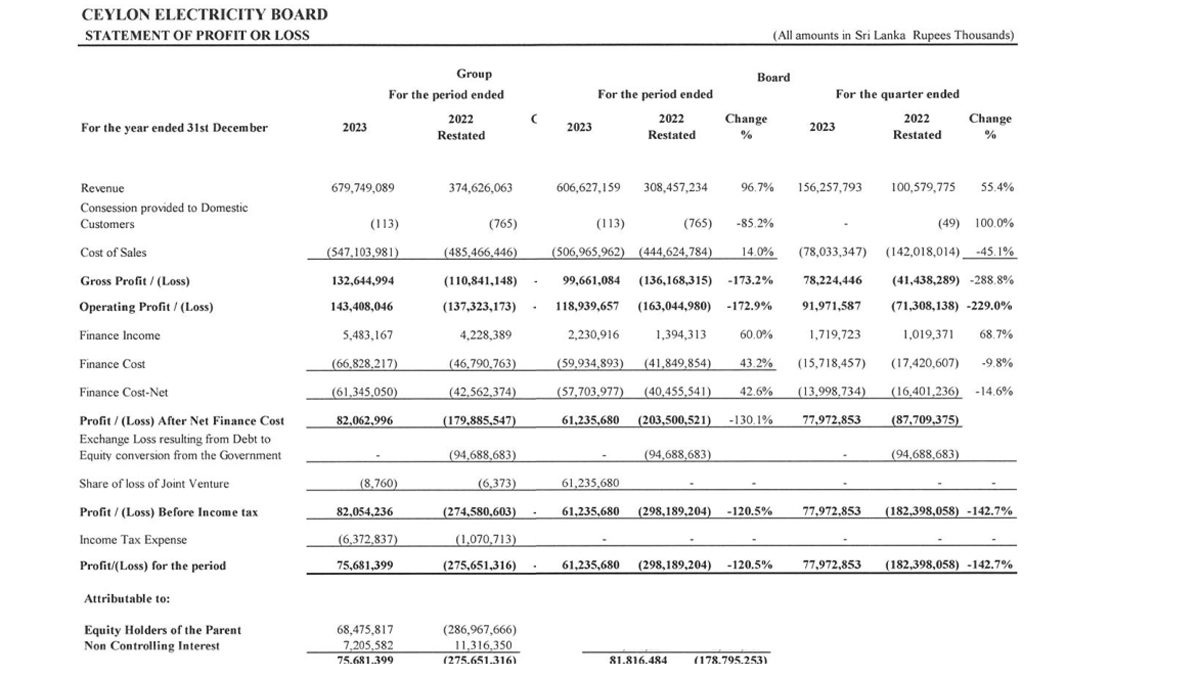General
Sri Lanka’s CEB reports Rs61bn profit for 2023 with Dec quarter gains


ECONOMYNEXT – Sri Lanka’s central bank borrowed US dollars from various counterparties through swap transactions, which had topped 3.2 billion US dollars by December 2024, official data show.
The net short position, including swaps disclosed by the central bank, grew by over almost 1.28 billion US dollars from December 2022 to 3,280 million dollars.
The gross position grew from 2,263 million dollars to 3,280 million US dollars over the year.
The central bank supported some state banks with dollars to cover their dollar exposures, which had since been paid back.
By December reported gross reserves of the central bank was 4,491 million US dollars, against swaps of 3,280 billion US dollars.
Swaps of around 1500 related to the People Bank of China.
Swaps allow a central bank to increase gross reserves, without raising domestic interest rates.
Swaps with domestic counterparties lead to liquidity being injected into money markets, which can be mopped if domestic credit growth is moderate.
At the moment many private banks have large dollar positions invested outside the country, which cannot be used for transactions domestically because of a money monopoly given to macro-economists. (Sri Lanka repays debt or collects reserves of U$5bn via banking system since rate correction)
However unwinding swaps after private credit has picked, or engaging in swaps after private credit has picked up, may lead to money being injected to maintain the policy rate, leading to excess credit by banks and balance of payments deficits and or currency collapses, analysts say.
Central bank swaps in the third quarter of 2018 led to a collapse of the currency under the ‘exchange rate as the first line of defence’ policy peddled to Sri Lanka, critics have said earlier.
Domestic currency proceeds of swaps were the primary ammunition to bust East Asian currencies in 1997-98.
Any depreciation after the swap proceeds have been used for imports (effectively mis-targeting rates) a central bank will run a forex loss.
The PBOC however had put a rule, preventing the use of the swap after gross reserves fell below 3 – months of imports, preventing Sri Lanka from getting into further trouble through the use of official reserves for private imports.
Sri Lanka’s central bank also used borrowings from the Reserve Bank of India, via the Asian Clearing Union to run BOP deficits.
Losses from exposed dollar positions of central banks which have gained ‘independence’ from fiscal rules and parliaments and engaged in macro-economic policy, including the Fed, have led to taxpayers bearing the losses in the end.
Swaps were invented by the Fed in the early 1960s, as it deployed macro-economic policy (printed money for growth) threatening its gold reserves and the Bretton Woods system.
Sri Lanka has other borrowings also, including from the IMF, which has made net foreign assets of the central bank negative. (Colombo/Mar05/2024)








